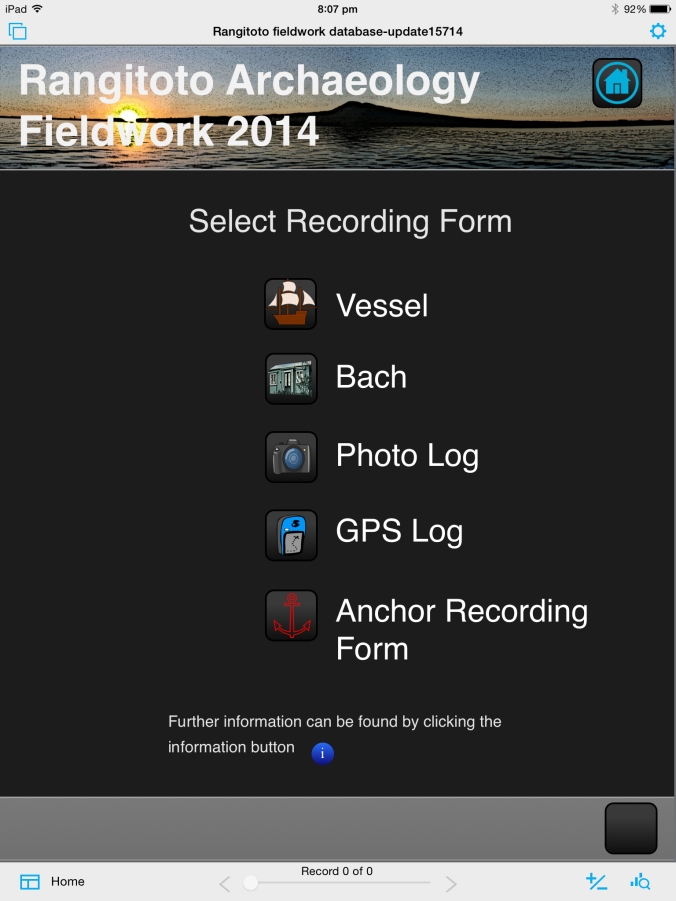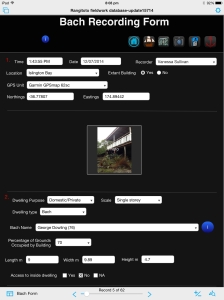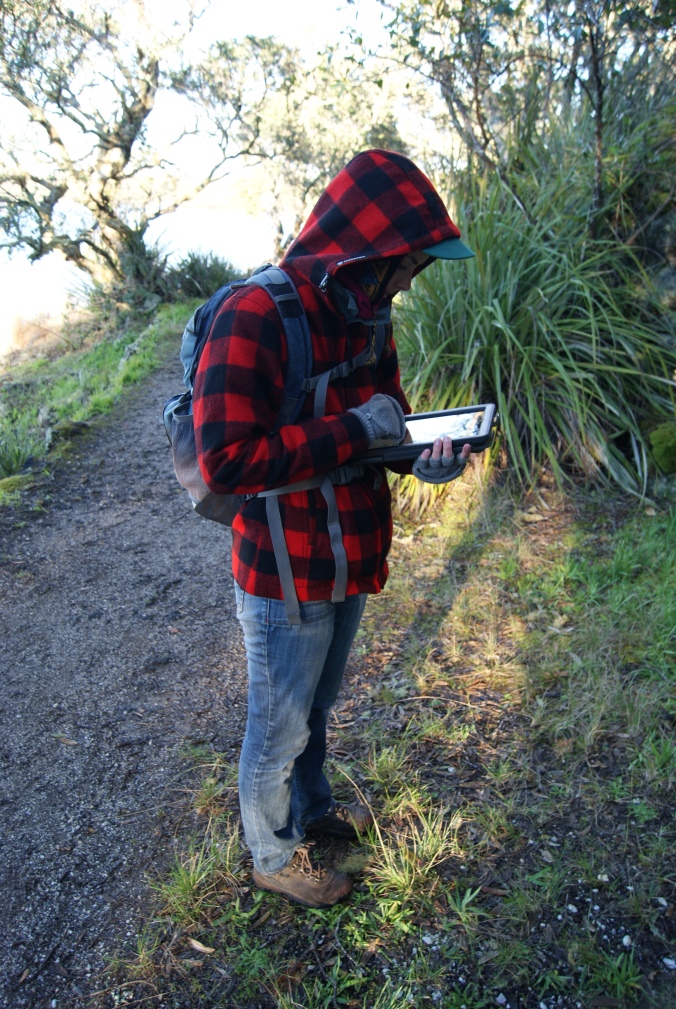Up until now, the blog has documented our finds in the field, but our recording methods have not been discussed. This blog post will introduce you to the way we are recording our sites on Rangitoto Island and considerations to look out for when using technology in the field.
Traditionally pieces of paper would be carried into the field and used to record artefacts, features, photos, anchors and GPS (Global Positioning System) points. For this field work, it was decided with the advancements and access to technology, that it was time to digitise the old paper recording forms. In doing so, it has allowed the recording forms to be stored in one place and no longer prone to wet and mushy paper when it is raining.
Filemaker Pro was used as the database software. The software allows you to develop an app like program that is user-friendly for whoever is in control. The database was created so it was easy to use on an iPad. While creating the database, time must be taken to insert all values and fields as you can’t do this when you are in the field. A value means the options that are available to choose from and a field is the name in which the values are assigned to. For example you might have the field ‘Location’ and the values assigned would be ‘Islington Bay’, ‘Rangitoto Wharf’ and ‘Beacon End’. By having prescribed values, you as a researcher have the ability to standardise and control input options in the field. This control is important as it limits the error that can be inputted into the fields. Errors on forms can range from different spellings to lack of consistency between answers. This may not sound like a big deal, but when it comes to data processing at night, it is a huge advantage to have. We’ve found that we no longer have to stay up to the early hours of the morning data processing that days information.
So how are we recording the bach and vessel sites using the iPad? The bach and vessel sites are recorded using prescribed fields and values. These include, name of recorder, date/time, location, GPS, photo, length x width, vessel material, type of vessel material and the list goes on. One person is in control of the iPad while the other takes the GPS points, notes of the site, setting up the scale for photos and scouring the site for vessel remains. Recording the vessels is slightly different in the sense that we look for evidence of salvage rather than re-use of vessel material.
The downside of technology in the field is the reliance on a digital copy of your information. Paper copies are physical and can be entered into a database. This way you retain two different copies of information. By using the iPad, you rely on having one copy. In the unlikely event of the database crashing, you can be sure your information will be lost. The only way to combat this at this stage, is to back up your database every night when you return from the field. This way you will most likely lose your days work and not the whole week. The other limitation is the reliance on power and the iPad can only hold its charge for so long. Luckily we return from the field every day to charge our electronics for the next day. But if you are planning on staying in a remote location for a long period of time, consider taking booster power packs or solar chargers. The other consideration for technology in the field is that water and electricity do not mix. For iPads, however, there are many aftermarket weather proof housings that can be used to protect your iPad from the rain, snow, wind and aid as a shock absorber when dropped. This project has employed a Lifeproof case (more can be found here http://www.lifeproof.com/en/) and so far has lived up to its expectations. The case has allowed us to work in all weather conditions and so far only ferry cancellations has hampered our survey work.
The benefit of using technology is the ability to control the information collected and entered into the database and to keep it consistent. Technology also allows for quicker data upload and extraction. This means time can be spent on other priorities for the field project.
Hopefully this has provided some info about the way we are recording the sites and if you wish to ask for more information feel free to comment or use the contact page. /KB



